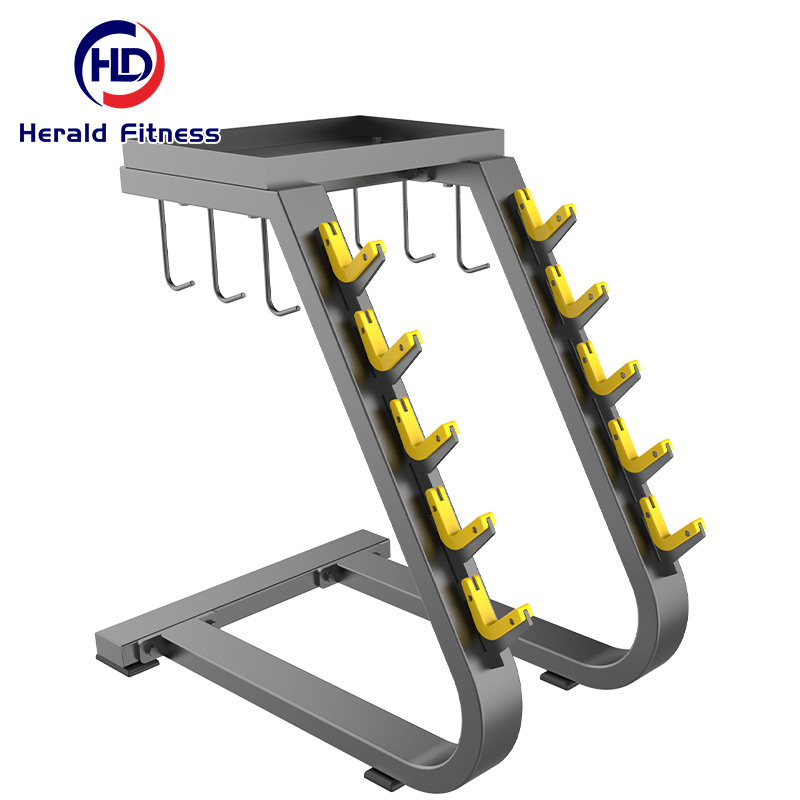A Handle Rack in a gym context typically refers to a storage or organizational unit designed to hold and organize various types of handles used for fitness equipment. Here’s an introduction to its features, benefits, and typical uses:
Features of a Handle Rack
- Multi-Compartment Design: Consists of multiple compartments or slots to accommodate different types and sizes of handles used for gym equipment.
- Durable Construction: Built from sturdy materials such as steel or heavy-duty plastic to withstand the weight and usage of handles.
- Compact and Space-Efficient: Designed to optimize space in the gym by providing a centralized storage solution for handles, keeping them neatly organized and easily accessible.
- Labeling or Signage: May include labels or signage for each compartment to indicate the type of handle stored, facilitating quick identification and retrieval.
- Wall-Mounted or Freestanding: Can be wall-mounted or freestanding, depending on the gym’s layout and space availability.
Benefits of Using a Handle Rack
- Organization: Helps maintain a tidy and organized gym environment by providing a designated storage area for handles, reducing clutter and improving safety.
- Durability: Ensures longevity of handles by storing them properly and preventing them from being misplaced or damaged.
- Accessibility: Enhances user experience by making it easy to locate and retrieve handles needed for various gym equipment, such as cable machines, resistance bands, and functional trainers.
- Space Management: Optimizes floor space in the gym, making it easier to navigate and utilize other equipment without obstruction.
- Efficiency: Streamlines workout sessions by ensuring handles are readily available, minimizing downtime and interruptions during training.
Typical Uses
- Cable Machines: Stores handles used for cable attachments, such as single grip handles, rope handles, and stirrup handles.
- Resistance Bands: Organizes handles used for resistance band exercises, providing quick access to different grips and attachments.
- Functional Trainers: Stores various handles used for functional trainer machines, including adjustable handles and bar attachments.
- Organization by Type: Segregates handles based on their type and size, facilitating efficient maintenance and replacement when needed.
Proper Usage
- Loading and Unloading: Place handles into their designated compartments or slots based on type and size, ensuring they are secure and properly stored.
- Labeling: Use labels or signage to clearly identify each compartment or slot, making it easy for users to locate specific handles.
- Maintenance: Regularly inspect the handle rack for any signs of wear or damage, and replace worn-out handles or components as needed.
- Cleaning: Keep the handle rack clean and free of debris to maintain handle hygiene and extend their lifespan.
Tips for Effective Use
- User Education: Educate gym users on the proper use of the handle rack to ensure handles are returned to their designated storage compartments after use.
- Rotation: Rotate handles periodically to distribute wear evenly and prevent overuse of specific handles.
- Storage Considerations: Store handles away from direct sunlight and moisture to prevent damage and deterioration over time.





















































Reviews
There are no reviews yet.